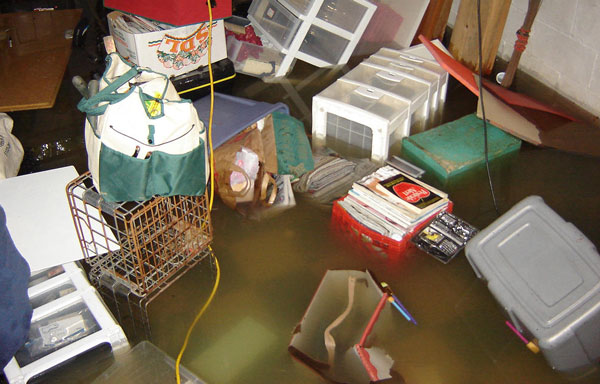Springtails Survive on Moldy Surfaces
By Chris Williams on May 16, 2013.

Question
The sliding patio door in our basement level leaked badly during heavy rain about a month ago. The wall and floor around the door did get pretty wet. We dried everything out and had the door replaced. But now we have these very tiny, light-colored jumping bugs around the door. I can’t imagine that they are coming in from outside since the new door seals well. Are they coming out of the walls?
Answer
They could literally be coming out of the walls! I suspect that, as a result of the leak, you now have some kind of moisture-loving pest probably emerging from damp wall voids. There are several pests that appear in such situations; most are tiny fungus beetles. But, if these pests are jumping, they are probably springtails, also known as Collembola.
Even though you thought you dried everything out, moisture probably seeped unseen into the wall or floor void. On a basement level, it can take a long time before voids dry completely. Moisture-loving pests feed on fungus, not always fungus you can see, but often a thin layer of almost invisible mold that forms on drywall, wood joists, wallpaper, or other surfaces.
Springtails get their name because they use a spring-like appendage at the rear of their body to jump, or at least launch themselves into the air. They are very common outdoors in moist soil, under bark or rotting wood, and in leaf mold. But they’re rarely noticed outside. Sometimes springtails will move inside when their usual outdoor sites get too dry.
Indoors, springtails go unnoticed too, until they build up to large numbers alerting the homeowner to a moisture problem. Other indoor springtail sites are plumbing leaks around sinks, damp wallboard from roof leaks, floor drains, overwatered house plants, sweating pipes, moldy mattresses and stuffed furniture—practically any surface that remains damp and allows mold to grow. Springtails don’t bite, they don’t damage any furnishings and they won’t move into other areas of your home unless they, too, are overly damp.
You should have a pest control professional inspect the site to locate and treat the damp areas and the source of the pests. Alternatively, if you’re willing to put up with the springtails for a while longer, you can try again to dry out the area. The goal is to get the humidity level low enough that mold will not survive. Without the mold and the high humidity, the moisture pests quickly die. Try using fans and/or a dehumidifier. You may end up having to open up the void to get it to dry. It’s possible that the space is already drying and that is what is forcing the springtails out into the open.
Photo credit: Urban Woodswalker / Foter.com / CC BY-NC-ND